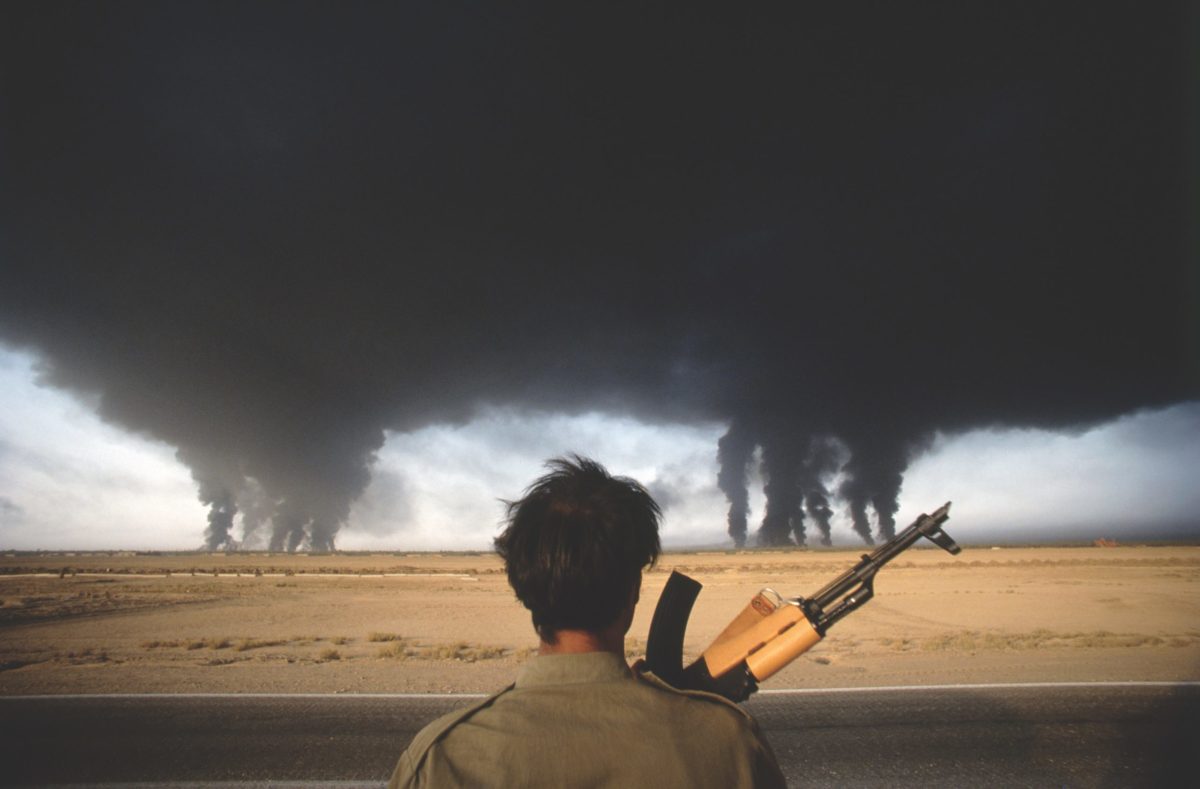In the early 1980s, many Western engineering and building contractors working in Iraq witnessed from the leisurely space of their hotel balconies a spectacle they would never forget. At night, the entire horizon was suddenly scorched and illuminated, a migraine-like strobing produced by the unceasing flashes of artillery fire and explosions, accompanied by an ominous chest-bass rumble. This continued for hours. When morning came, a long, bedraggled line of civilian vehicles would snake back into town, coffins strapped to their roofs, the recent war-dead inside. The cycle was repeated night after night.
The contractors and other foreigners were shocked witnesses to the Iran–Iraq War (1980–1988), a conflict that despite its years of horror is strangely sidelined in modern Western military history. Sandwiched between the Vietnam War (1965–1975) and the Gulf War (1990–1991) and roughly coterminous with the Soviet–Afghan War (1979–1989), the Iran–Iraq War has been largely overshadowed by conflicts that play more strongly in Western consciousness. Yet the scale of the Iran–Iraq War was dizzying: eight years of World War II–style armor, artillery, and infantry battles accentuated by chemical weapons attacks, burning cities, and blazing oil tankers. The casualties from this war are estimated at anywhere between one million and two million.
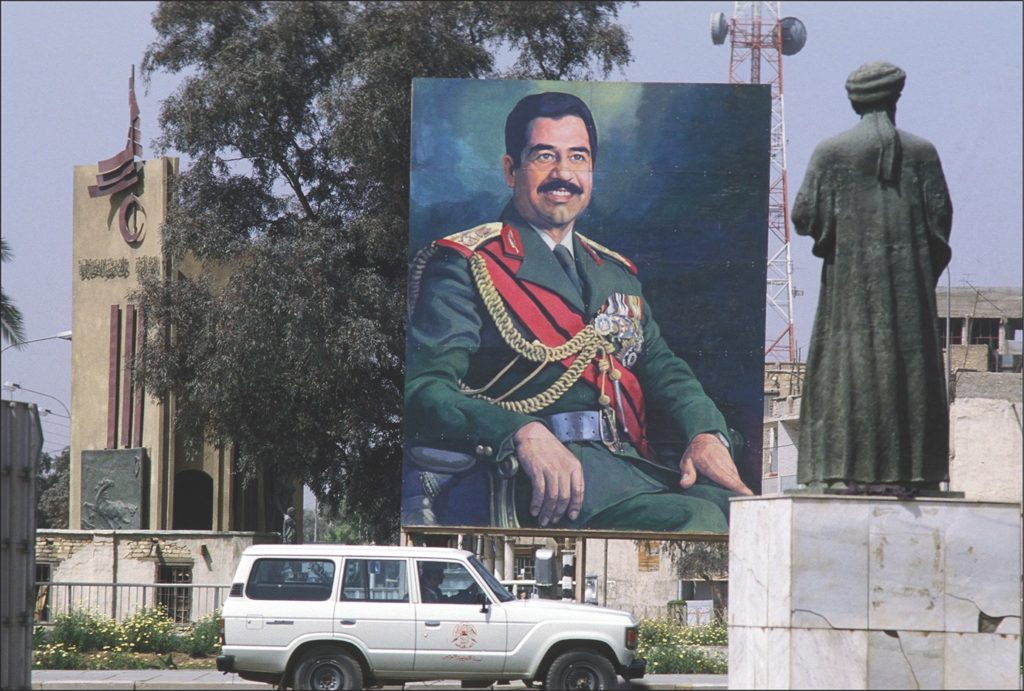
The Iran–Iraq War therefore demands our attention, not least for its potential to hold a unique position in the world’s military narrative. Some historians and strategists have defined the Iran–Iraq War as the last conventional war in history. That is a bold claim in an age that has been packed with conflict since 1988, so it deserves testing. But we can raise the possibility that the Iran–Iraq War is not only the last conventional war to date but could also be the last conventional war ever.
Why Did Iran and Iraq go to War?
We should first establish our definition of conventional warfare. Typically, conventional warfare is fought between nation-states by conventional military means—that is, with small arms, artillery, armor, combat aircraft, and warships, and not by nuclear, biological, or chemical weapons. The military effort is primarily directed at destroying the operational capability of the opposing army. Conventional warfare is usually compared to counterinsurgency, which, as well as being tactically dissimilar to open warfare, is typically fought within state boundaries. In conventional warfare, states lock horns on the open, bloody battlefield.
The roots of the Iran–Iraq War were many and complex. Geography was crucial. Iran is more than three times the size of Iraq, with excellent access to maritime trade. In addition to facing the Caspian Sea to the north, Iran has 1,250 miles of coastline bordering the Arabian Sea, the Gulf of Oman, and the Persian Gulf—that most vital channel for Middle Eastern oil traffic. But Iraq is almost entirely landlocked, hemmed in by Iran, Turkey, Syria, Jordan, Saudi Arabia, and Kuwait, countries that have not always been Iraq’s friends. Iraq’s vulnerability on its land borders was compounded by having only 25 miles of coastline bordering the Persian Gulf, from which the Shatt al-Arab waterway extends to form the southernmost border with Iran. Because the economies of both countries depended heavily on oil production and export, control of the Shatt al-Arab, the location of numerous ports and oil facilities, was crucial to both countries, but especially to Iraq. The 1975 Algiers Agreement settled a long-standing dispute over the waterway, with an agreed border running down the center of the main channel, but it remained a potential flashpoint.
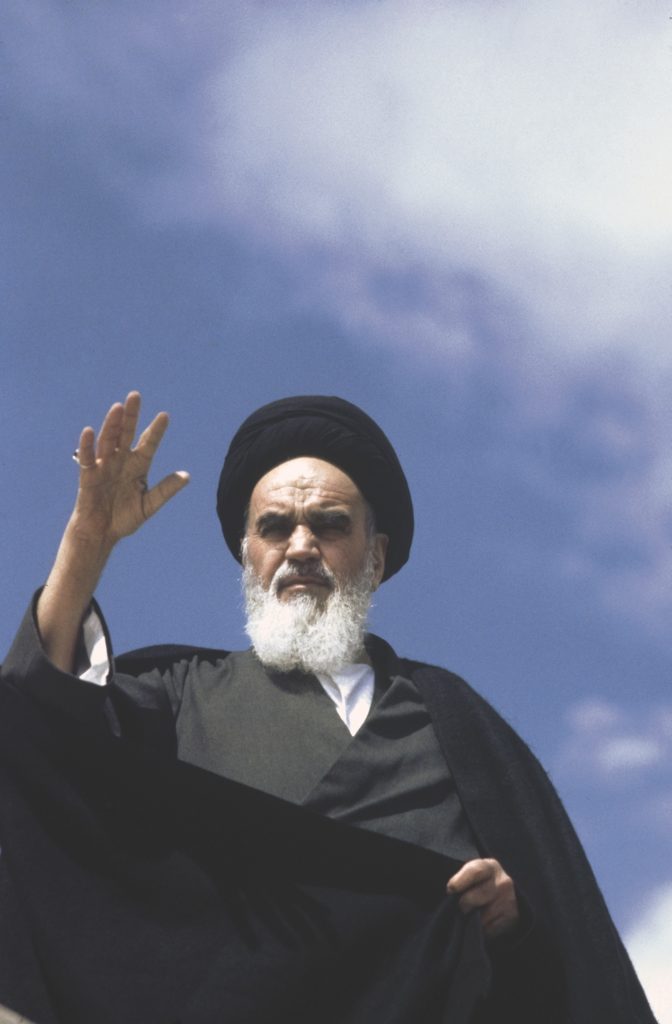
It was one among many. There were religious fault lines too. Iran’s population was 95 percent Shia. Iraq’s people were about 60 percent Shia and 30 percent Sunni, but the Sunnis formed the ruling class, and power was concentrated in the hands of the Baath Party. Sunni rule was therefore potentially fragile, not least because Iran regularly reached across the border to stir dissent between Sunni and Shia. Other metrics would have heightened Iraq’s sense of vulnerability in 1979. Iran’s population was 39 million; Iraq’s was 13.5 million. Iran produced 5.2 million barrels of oil per day, compared with Iraq’s 2.6 million. The shah of Iran—Mohammad Reza Pahlavi, the monarch of Iran since 1941—had also built one of the most powerful militaries in the Middle East, with impressive purchases of advanced military technology from the United States, Britain, France, and the Soviet Union. The shah had a land army of 285,000 men, but with the potential for drawing more than five million men into armed service. Iran’s total defense budget for 1977 was nearly $8 billion; in the same year, Iraq’s was about $2 billion. Nevertheless, the Iraqi regime had invested heavily in military expansion, with an army of 200,000 but capable of more than doubling in strength through the recall of reservists, and respectable arsenals of armor, artillery, and aircraft, mainly sourced from the Soviet Union, Czechoslovakia, and France.
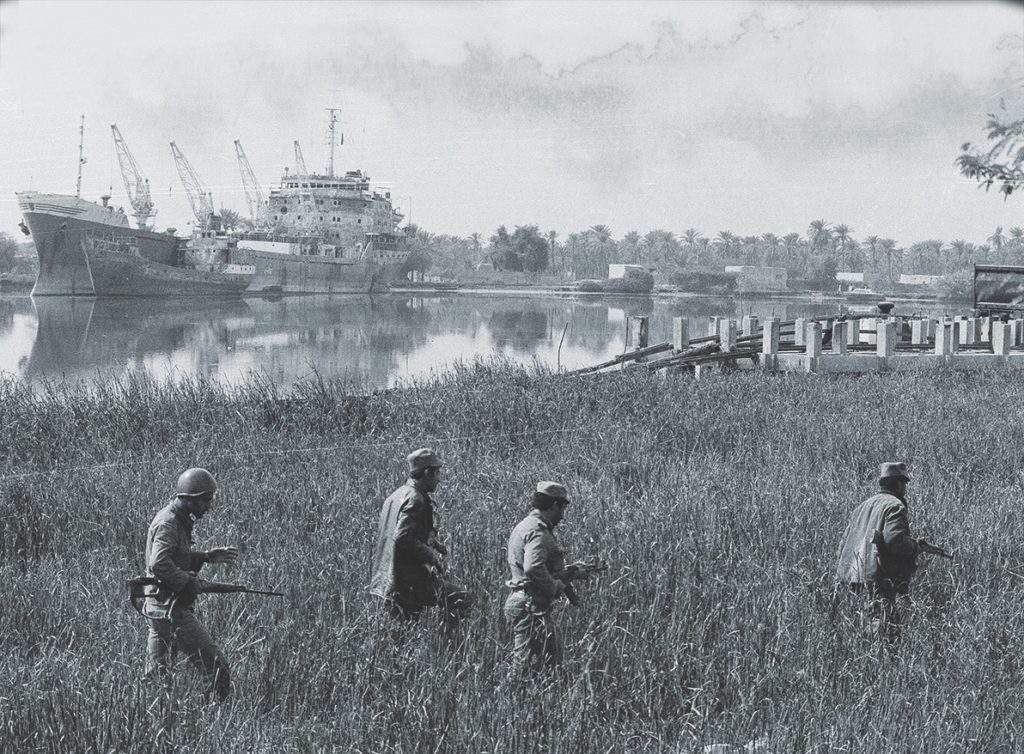
Enter Saddam
In 1979 everything changed. On July 16 Saddam Hussein al-Tikriti became president of Iraq, although he had already been its de facto ruler for some time. Saddam was paranoid, cunning, and cruel. His raison d’être was little more than long-term political survival, his power cemented by an all-seeing state surveillance system and regular, brutal culls of both friends and foes. By the time he assumed the presidency, however, an even greater change had occurred across the border in Iran. This was the year of Iran’s Islamic Revolution, a grassroots uprising that ejected the shah from his own country and brought to power the previously exiled Grand Ayatollah Khomeini. On April 1 Khomeini declared Iran an Islamic republic.
The transformation from authoritarian monarchy to militant theocracy was not just a domestic matter for Iran. Khomeini envisaged the Islamic revolution as a globally exportable phenomenon, starting with Iraq. An Iranian-sponsored campaign of political terrorism claimed or threatened the lives of many Iraqi officials. Then, on September 17, 1980, Iran abrogated the Algiers Agreement, threatening Iraq with loss of control of its key access route to the Persian Gulf through the Shatt al-Arab waterway. Despite the confident Iranian foreign policy, however, the revolution also provided Saddam with a window of opportunity. Revolutionary disruptions to the economy sent Iran’s oil revenues plunging, the fall compounded by the flight of thousands of skilled foreign contractors. Further, Khomeini initiated a purge of the ranks of the country’s armed forces, executing or firing hundreds of senior officers tainted by their historical associations with the shah. The army rapidly dropped to 155,000 men. For Saddam, the message was clear: if he was going to go to war with Iran, now was the time to strike, before Iran’s economy and army could get up off their knees.
GET HISTORY’S GREATEST TALES—RIGHT IN YOUR INBOX
Subscribe to our Historynet Now! newsletter for the best of the past, delivered every Wednesday.
On September 22, 1980, Saddam pulled the trigger in what he hoped would be a short but decisive invasion of Iraq. The assault, spread across a 40-mile front, had a critical concentration in the south against the oil-rich Iranian province of Khuzestan, over which Iraq had long extended claim. The objective was to capture Khuzestan, isolate it from the rest of the country, and simultaneously secure the Shatt al-Arab. Saddam wanted to avoid a deep and logistically challenging invasion into the heart of Iran (Tehran, the Iranian capital, was nearly 500 miles from the Iraqi border), instead initiating a cross-border campaign that would quickly stop and establish a defensive line, compelling negotiations and Iranian capitulation. Thus Saddam committed only seven of his 12 available divisions, five of the seven in Khuzestan.
The invasion indeed caught the Iranians unprepared (most of their major forces were deployed in Iran’s interior) and inflicted heavy casualties, but Iraq also lost 7,000 men, many of them in a close-quarters street battle to clear the city of Khorramshahr of fiercely determined Iranian paramilitaries. Abadan—the site of one of the world’s biggest oil refineries—was besieged, but not taken. Despite imperfect results, on December 7 Saddam announced that his forces would advance no farther and would hold the defensive line they had set in western Iran, pending negotiations. Yet the invasion electrified the Iranian regime and population, resulting in a massive mobilization of forces, much of the new manpower coming from enthusiastic volunteers committed to the new jihad (holy war).
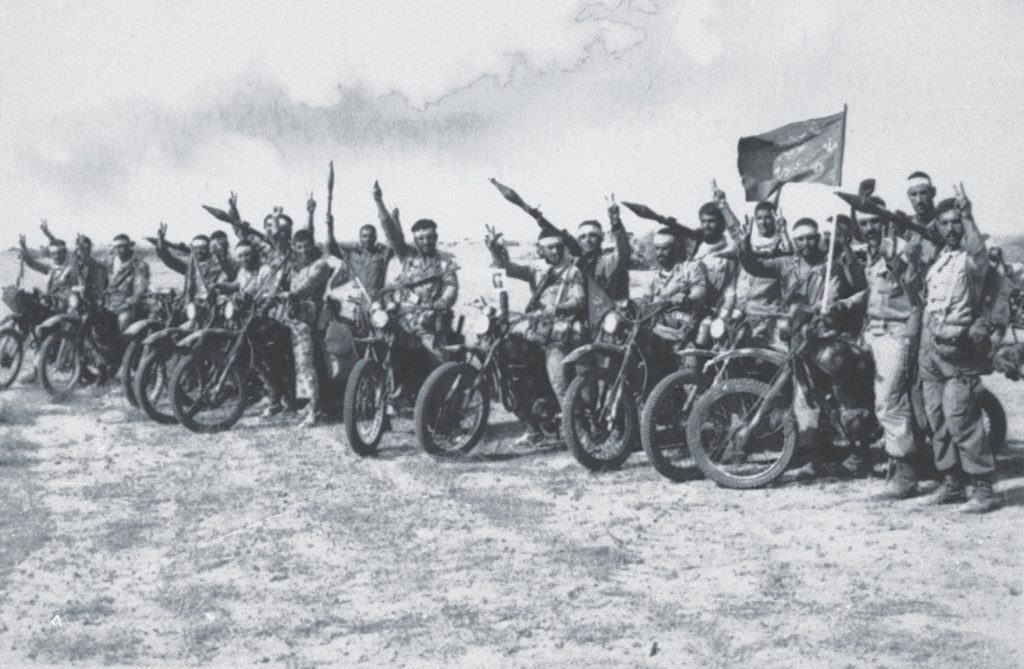
Bogged Down
Contrary to Saddam’s intentions, what followed the invasion was essentially more than seven years of old-school attritional warfare. This outcome had much to do with the internally divided structure of the armed forces on both sides. Iran and Iraq both had large conventional armed forces, but their political masters regarded them with suspicion. Armies and their commanders were, after all, the traditional wellspring of sudden and violent coups in the Middle East and were tainted by their connections to legacy regimes. To offset this potential threat, revolutionary Iran and Baathist Iraq created ideologically or politically “pure” sub-armies. These formations were loyal, above all, to the regime and not to the wider military. Iraq had the Republican Guard, formed in 1963 as a small Baath Party bodyguard force, but by 1988 it was some 103,000 strong, with loyalty cemented by highly preferential training, equipment, pay, and conditions of service. Saddam could also draw on extensive paramilitary forces, chiefly the Iraqi Popular Army (a politicized civilian volunteer force) and the Kurdish National Defense Battalions. These bodies were capable of little more than light infantry skirmishing, and the defense battalions, with high desertion rates, were highly unreliable, yet they added another half million men to Saddam’s armed capability outside the regular army.
The Iranian regime was even more suspicious of its conventional forces. Its revolutionary equivalent of the Republican Guard was the Pasdaran, established on May 5, 1979. Known officially from 1981 as the Islamic Revolutionary Guard Corps, the soldiers in the Pasdaran were fanatically committed to the Islamic regime. The Pasdaran’s growth was astonishing: In June 1981 it numbered 25,000 men; by 1987 it was half a million strong. Training was poor and patchy, with many soldiers going into action with little more than two weeks of basic infantry instruction, but the Pasdaran in many ways became the principal instrument of Iranian warfighting, with the regular army often alienated in secondary status.
In addition to the Pasdaran, however, were the Basij, by far the most disturbing element of the Iranian military. The Basij were mostly poor, uneducated, and fanatical (at least in theory) volunteers. At first it was made up mostly of 18-to-30-year-olds, but the entry requirements were later loosened to scoop up legions of children, some as young as 12, as well as old men. To the outside world, the Basij were the very definition of cannon fodder, given almost no training and armed mainly with their conviction of a fast pass to heaven, indicated by their red bandanas displaying Quranic verses. Some 155,000 Basij would die in the war, with acceptable practices including the herding of mostly unarmed children through minefields to clear the way. Some Iraqi soldiers remember the sight of Iranian children riding against their lines on bicycles, the Iraqis laughing and withholding their fire until the children suddenly started throwing grenades, after which they were pounded to destruction by small-arms fire and artillery—a searing memory for the defenders.
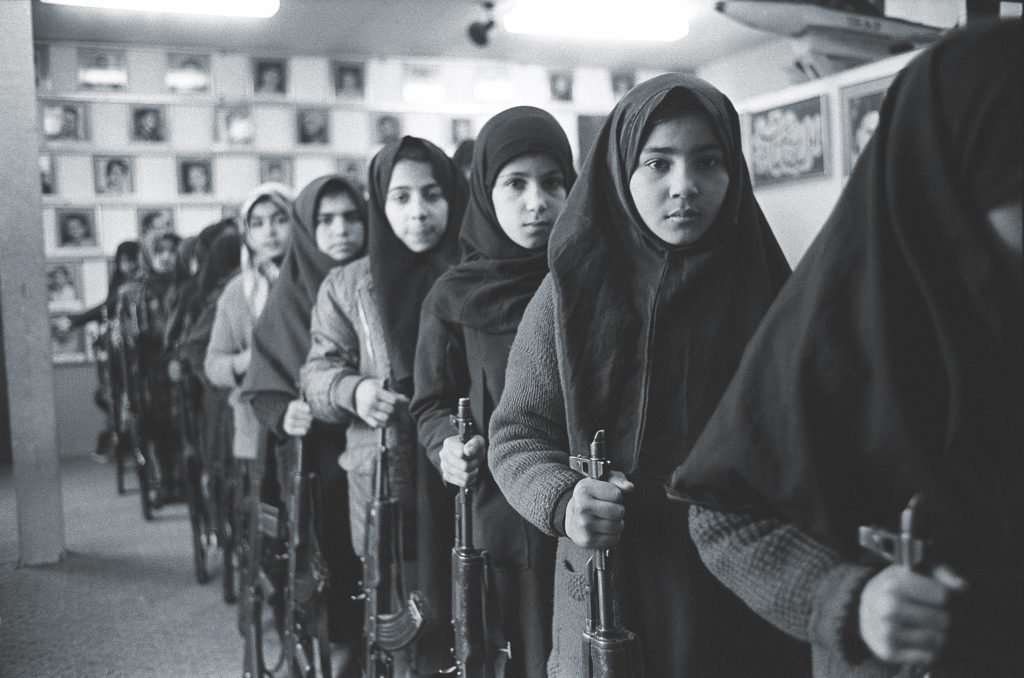
Although armor, artillery, and aircraft—especially artillery—would be heavily applied in the Iran–Iraq War, this was pervasively an infantry conflict, one defined by masses of human beings on the battlefield. Nor was there much sophistication in command and control. Both armies were heavily politicized, centralized, and riven by interservice dissension. Frontline initiative among officers was either suppressed or absent, with command decisions jealously guarded by the regime’s political masters. The reality check of combat, with its heaps of dead soldiers, did go some way toward correcting gross inefficiencies. By 1985, for example, Iran’s overreliance on the Pasdaran and Basij for crude frontal assaults eventually gave way to greater combined-arms cooperation between the army and the paramilitaries, while in 1986 Saddam was compelled to give army commanders more direct tactical control as the demoralized army teetered on the edge of mutiny.
Iran Fight Back
In January 1981, following the Iraqi invasion, Iran attempted to dislodge its opponents with three armored brigades, producing the biggest tank battle of the war. (Some 300 tanks were destroyed in the engagement.) But from then until 1985, Iran concentrated on repeated frontal assaults. These were vast, bludgeoning efforts reminiscent of the Western Front in World War I and included “human wave” attacks that attempted to overwhelm Iraqi guns with sheer volume of moving manpower. There was, however, some element of tactical thought here. Typically, the Iraqi army would launch an attack with armor, artillery, and air strikes, the Pasdaran following in a surging swarm, often using rapid guerrilla-style infiltration tactics to disorient and terrify the defenders at multiple locations. These were big actions. Operation Undeniable Victory on March 22, 1982, for example, saw 100,000 Iranian troops attack in the Dezful-Shush area, while Operations Dawn 5 and Dawn 6 in February 1984 used 500,000 men across 150 miles of front.
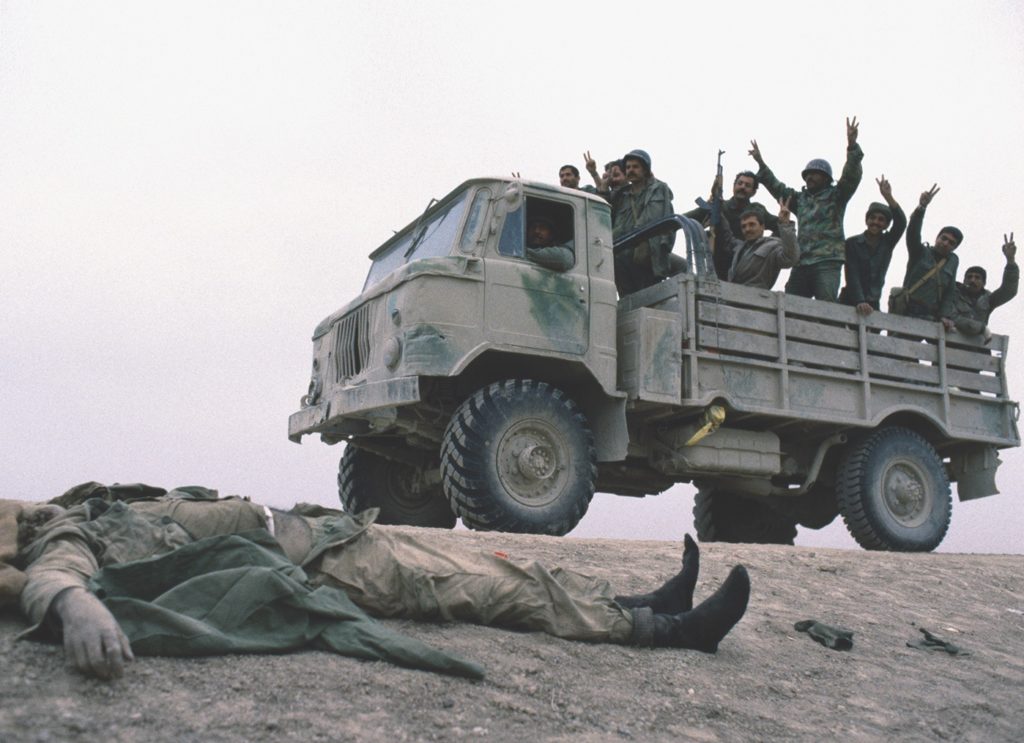
Iran’s overarching objectives were to push the Iraqis out of Iran and then maintain the momentum into Iraq itself, occupying its vital commercial and oil-producing centers and overthrowing Saddam’s regime. Despite horrific casualty numbers, the Iranians succeeded in driving the punch-drunk Iraqi forces from Khuzestan and from Iran altogether by May 1982, but the forward movement was eventually arrested at an immensely strong defensive line established on the Iraqi border, defended by 20 Iraqi divisions. For the next three years, Iran threw hundreds of thousands of soldiers, many of whom were little more than civilians repurposed by uniforms against these positions without significant result, other than to scatter the arid landscape liberally with corpses. Notably, the Iraqi defense now included the tactical deployment of chemical weapons, at first mustard gas but escalating to appalling nerve agents such as Tabun, VX, and Sarin. These were used against not only Iranian soldiers but also Iraq’s own people in a vicious terror campaign that sought to crush all semblances of resistance within the Kurdish population. On March 16, 1988, in the most grotesque such incident, 5,000 civilians died and up to 10,000 more were seriously injured by a combined mustard gas and nerve agent attack on the town of Halabja, the agents dispersed indiscriminately over the town via bombs dropped from Iraqi MiGs and Mirages.
the Inflection Point
The year 1985 was a turning point. By now, Iraq had built up its strategic strength, mainly as the beneficiary of massive economic and military support from an international community fearful that the Islamic Revolution would spread. Advanced weaponry flooded in from the Soviet Union, France, Egypt, and other countries, while the United States gave financial credits for major infrastructure projects. Iran, meanwhile, was beginning to struggle, economically and operationally, as it became a pariah state. It therefore turned to a scattered range of military suppliers, including North Korea, Libya, China, South Africa, Pakistan, and even Israel. But while Iran thus solved its supply problems in terms of volume, the sheer diversity of equipment types became a nightmare for stock control, maintenance, and training, and many of the systems went unused or underused.
Nevertheless, the Khomeini regime finally realized that it could not win the war simply by feeding men into the voracious mouths of Iraqi guns. From 1985 on, Iran moved away from the human wave in favor of more orthodox military tactics, boosted by greater interservice cooperation and improved warfighting training for the Pasdaran. In 1986 the new approach brought game-changing dividends when, on February 9, Iran launched Operation Dawn 8 with 100,000 troops. It consisted of a diversionary attack against Basra, Iraq’s second largest city, but the main thrust fell in the far south on the al-Faw peninsula, which was overrun and captured by the ecstatic victors. Three Iraqi counterattacks could not dislodge the Iranians, and on March 10 the Iraqis gave up trying to do so, the battle for the peninsula having cost 10,000 Iraqi and 30,000 Iranian dead.
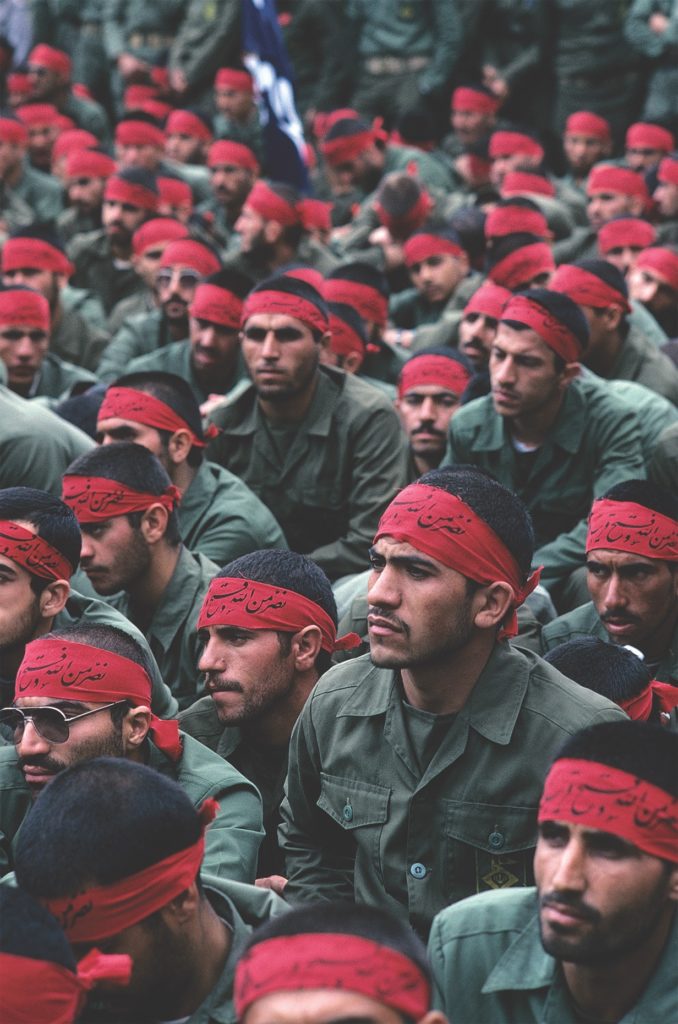
The capture of the al-Faw peninsula spurred Saddam to refocus more of its efforts into strategic actions against the Iranian economy. Since 1984, Iraqi aircraft had been attacking Iranian merchant ships and oil tankers passing through the Persian Gulf, and this so-called tanker war soon intensified, leaving many of the ships listing and blazing in the blue waters of the Gulf. Saddam also launched the so-called War of the Cities, an air and missile artillery assault on major Iranian urban centers, including the capital city of Tehran. In addition, Western intervention in the conflict now went up a gear, triggered by Iran attacking international ships bound for Iraq, including vessels from Kuwait. The United States launched Operation Earnest Will, shielding Kuwaiti shipping with protective escorts and raising the possibility that Iran might inadvertently clash with a superpower adversary. Such a conflict became a reality when President Ronald Reagan authorized the U.S. Navy to retaliate after the USS Samuel B. Roberts, a guided missile frigate, was holed by an Iranian mine on April 14, 1988. Six Iranian vessels, including two frigates, were sunk; two F-4 jets were shot down; and two oil-drilling platforms were assaulted by U.S. Marines. Further, in July 1987 the United Nations Security Council passed Resolution 598, calling for a ceasefire. Saddam deeply desired a ceasefire, and now he had international backing for one.
Unpopular War
By 1987, though Iran was still strong militarily, popular support for the war was waning. Khomeini decided on a last throw of the dice. He issued a fatwa (an Islamic legal pronouncement) commanding his forces to win the war by March 21, 1987, the Iranian New Year. Thus began yet another round of blunt offensives, part of the “Karbala” campaign, with an especially vigorous attempt to break through and capture Basra. The offensives bled out in the sand, by which time Iran was teetering on the brink of economic and social collapse.
Nearly eight years after its initial invasion of Iran, Iraq now returned to the offensive. In total, Saddam’s forces launched five offensives from April through June of 1988, recapturing the al-Faw peninsula, pushing Iranian forces back over the border, and driving into Iran itself once again. Khomeini’s regime was facing catastrophic defeat. The survival instinct kicked in. Khomeini accepted U.N. Resolution 598, and Iraqi forces withdrew to the border to facilitate the discussions. Silence now reigned over battlefields soaked with the blood of hundreds of thousands of men, the human cost being paid despite almost no change in the prewar borders of the two countries.
TEsting the Limits
Elements of the Iran–Iraq War defy the “conventional war” classification. Chemical weapons were used extensively, not just conventional arms. The war also included insurgency campaigns: Iran and Iraq both fought Kurdish separatist groups in their northern territories, and Iran faced a further campaign of sabotage and assassination by the left-wing People’s Mujahedin Organization of Iran, or the Mujahedin-e-Khalq, which was only quashed in the late 1980s. But the insurgencies were incidental to the main war.
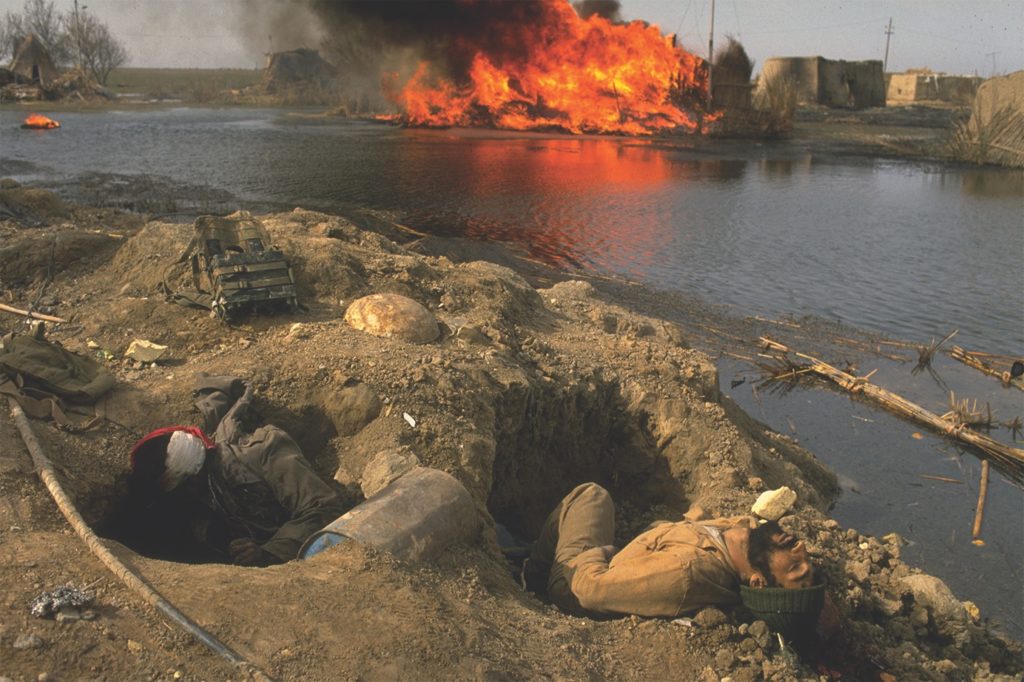
With only a slight adaptation of definitions, the Iran–Iraq War arguably stands as the last conflict in which conventional mass was central to the outcome of both the battles and the war. It was a conflict of tactical volume—huge numbers of troops and equally large concentrations of artillery firepower deployed across broad fronts. The employment of mass was in many ways a byproduct of the overly centralized command-and-control arrangements, which resisted operational complexity, and also the large-scale conscription and volunteerism that expanded the armies. Although both sides fielded some truly professional units, the majority of troops were lightly or poorly trained and erratically equipped. The armed forces also mirrored wider societal problems. Iran’s army, for example, reflected the country’s 60 percent illiteracy rate.
The argument that the Iraq–Iran War is the last conventional war is open to challenge. It could be argued instead that the title might be better given to the 1990–1991 Gulf War. As Saddam’s ruthless solution to resolving his war debt, Iraq’s invasion and occupation of Kuwait led to Iraqi forces being violently ejected from Kuwait and beaten heavily in land combat in Iraq by a vast U.S.-led coalition, the war including several major armor battles and some infantry engagements. Yet while much of the Gulf War was certainly conventional, it can’t really be compared with the Iran–Iraq War, primarily because the coalition force totally dominated the Iraqis in the technological domain. Operation Desert Storm signaled the moment when traditional conventional warfare, centered on mass of people and firepower, met the future, focused more on digital warfare, remote surveillance, and precision killing. Thus, in this one-sided conflict the coalition lost just 292 killed and about 500 wounded versus estimated Iraqi casualties of up to 50,000 killed, 75,000 wounded, and 80,000 captured.
Takeaways From the Iran-Iraq War
In 1990, in the lead-up to the Gulf War, Stephen C. Pelletiere and Douglas V. Johnson wrote Lessons Learned: Iran-Iraq War for the Strategic Studies Institute of the U.S. Army War College. Based on takeaways from the Iran–Iraq War, they recommended three key strategies to defeat Saddam: to eliminate Iraq’s missile force and prevent Saddam from escalating the war to Israel; to secure air supremacy; and to negate Iraq’s artillery capabilities by destroying Iraq’s fire support system. In all these measures, the priority was to blunt or erase Iraq’s very capability to wage conventional war, which was largely all it knew. The coalition also stripped Iraq of its command-and-control network, and its decapitation rendered the Iraqi forces blind and wandering, barely able to respond coherently.
The two major international conflicts that followed the 1990–1991 Gulf War—Afghanistan and Iraq from 2001 and 2003, respectively—were certainly bloody and prolonged conflicts, but were primarily massive counterinsurgency operations. Thus the idea of two mass armies slugging it out with artillery, bombs, missiles, and small arms still felt like a receding memory of a bygone age. Then, shockingly, on February 24, 2022, Russia launched a mass invasion of Ukraine, pouring 190,000 troops and thousands of armored vehicles and artillery pieces over the border. In this action, we have witnessed the return of conventional warfare. The war has, on many levels, been reminiscent of the great battles of World War II: entire cities demolished by artillery and missile strikes; prolonged offensive and defensive infantry battles; major armor and antiarmor actions, including tank vs. tank engagements; levels of military casualties not witnessed since the Iran–Iraq War.
The war in Ukraine differs from the Iran–Iraq War in many ways, not least technological—examples from Ukraine include the extensive use of combat and surveillance drones, the key influence of sophisticated guided antiarmor and surface-to-air missiles, and the use (or misuse) of digital communications. But the Russian invasion is a startling reminder that conventional interstate warfare has perhaps been waiting in the wings, hiding behind our beliefs in cooperative internationalism and the new ways of “hybrid” warfare. Conflicts such as the Iran–Iraq War, therefore, suddenly have much to teach us about issues such as open-terrain tactics, the use of artillery against defensive positions, combat logistics, and strategic endurance. International involvement and the provision of advanced weapon systems had a major influence on the outcome of the Iran–Iraq War, as it may well do in Ukraine. The Iran–Iraq War, however, was primarily fought between just two adjacent nations. Only time will tell whether the Russo–Ukrainian War remains similarly contained.

this article first appeared in military history quarterly
Facebook: @MHQmag | Twitter: @MHQMagazine

